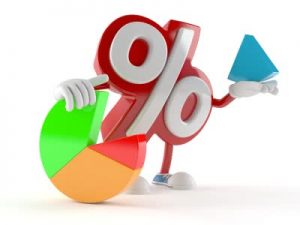Dividend Value Builder Newsletter
Return on Total Assets – Ratios & Calculations
Return on Total Assets Ratios provide analysts with an indication of management efficiency in utilizing company assets to create profits. Because it includes all (total) assets (assets funded by debt and equity) it is a profitability ratio that interests both creditor and equity stakeholders.
As a value investor our first priority is to purchase investments for less than their intrinsic value. But value investors that favor holding stocks for many years (i.e. Warren Buffett) need to combine value with quality.
If you don’t buy quality you need to sell your investment when its price gets close to its real value. There is nothing wrong with this strategy. Sometimes the price of a stock is so low that, even though it may lack the characteristics of a quality investment, it is still a bargain worth buying.
With a quality investment you have the option to hold it longer than other investments. The expectation is a quality company that will grow earnings at an above average rate. These advantages (i.e. superior management, strong balance sheet, operating efficiencies, etc.) increase the probability that the company will experience above average growth in its stock price.
One of the ways to find quality companies is to see how efficiently the management of a company is employing its assets. Here are six return on assets ratios analysts use to measure efficiency.
1. Return on Assets (ROA)
Return on Assets (ROA) = Net Income / Total Assets
where….
Net Income = Revenue – Cost of Goods Sold – Other Expenses
(Find Net Income is the bottom line of the Income Statement)
Total Assets = Current Assets + Long Term Assets
(Total Assets is the bottom line of the assets portion of the balance sheet.)
ROA is the broadest return on assets metric for measuring income in relation to company assets. It tells you how efficiently the company is using the assets of the business to create net income.
This is useful in comparing between similar companies. Since it does not take into account capital structure it is best used to compare companies in the same industry. In addition, since net income can be volatile, it is best to compare over a number of years.
2. Cash Return on Assets
Cash ROA = CFO / Total Assets
where….
Cash Flow From Operations = Net Income + Depreciation & Amortization +/- Time One-Time Adjustments +/- Changes in Working Capital
(Find Cash Flow From Operations is the bottom line of the operating activities in the Cash Flow Statement.)
Cash Flow is considered by most analysts to be superior to accounting metrics (such as Net Income) that can be distorted by non-cash accounting entries. Cash Return on Assets measures how efficiently the company’s assets are being utilized to create cash returns.
3. Gross Profitability
Gross Profitability = Gross Profit / Total Assets
Gross Profits = Revenue – Cost of Goods Sold
(Find Gross Profits in the Income Statement.)
(Find Total Assets in the Balance Sheet.)
Gross Profitability is a narrower metric that focuses on the company’s product, pricing, and costs. Since Gross Profit is a measurement from the top of the income statement, it can’t be distorted by other figures farther down the income statement.
Tobias Carlisle, in Deep Value (affiliate link) provides evidence that this may be the best Return On Total Assets Ratio to single out stocks that can provide above average rates of return. (pg. 195)
Interested in Intrinsic Value Stock Analysis?
4. EBITDA Return on Assets
EBITDA Return on Assets = EBITDA / Total Assets
where…
EBITDA = Net Profit + Interest + Taxes + Depreciation & Amortization
(Find EBITDA in the Income Statement. Many financial statements will provide as a line item. Almost any financial service will provide as a line item.)
EBITDA Return on Assets measures how efficiently a company is generating EBITDA. This means capital structure, different tax rates, and different capex costs would not affect comparisons between companies. EBITDA Return on Assets has limited usefulness for most investors.
5. Return on Total Assets (ROTA)
Return on Total Assets (ROTA) = EBIT / Total Assets
where…
Earnings Before Interest & Taxes (EBIT) = Net Income + Interest + Taxes
(Find EBIT in the Income Statement. Many financial statements will provide as a line item. Almost any financial service will provide as a line item.)
Return on Total Assets (ROTA) measures how efficiently a company is generating earnings before interest and taxes are paid. This means capital structure and different tax rates would not affect comparisons between different companies.
6. Free Cash Return on Assets
Free Cash ROA = FCF / Total Assets
where…
Free Cash Flow = Cash Flow From Operations (CFO) – Capital Expenditures (Capex)
(Find Capex in the Cash Flow Statement. In many financial statements it will be labeled Property, Plant, and Equipment.)
Free Cash ROA measures how efficiently total assets are being used to produce cash for equity and debt stakeholders.
Additional Reading:
Intrinsic Value Stock Analysis – My Formula
Minimize Large Portfolio Drawdowns
Invest With Confidence in Less Time - Manage Your Portfolio Without Behavioral Errors

